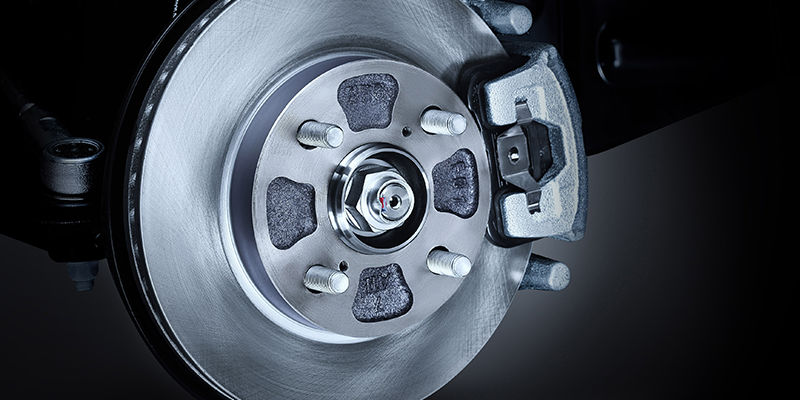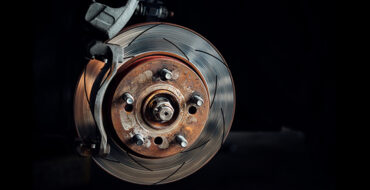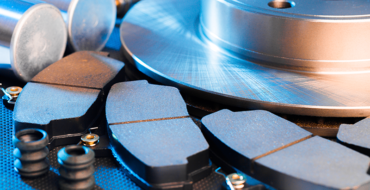In the automotive world, ABS stands for anti-lock braking system. Let’s go over what this system does, how it works, which vehicles have it, and how to maintain it.
What is ABS in a Car?

What Is ABS?
ABS helps you steer in an emergency by restoring traction to your tires. It stops your wheels from locking up when you brake suddenly, preventing skidding and giving you the chance to potentially avoid a collision. ABS does not shorten your stopping distance; it only allows you to steer out of trouble as you brake.
The three most common types of ABS are one-channel, three-channel, and four-channel. One-channel systems have one sensor in the vehicle’s rear. The three-channel system has two sensors in the front and one in the rear. Four-channel systems have one sensor for each wheel. Four-channel systems are the most common type of ABS found in modern passenger vehicles.
How Does It Work?
ABS is automatically activated when you push down firmly on the brake pedal.
When you need to make an emergency stop, apply firm pressure to the brake pedal and hold it down. If you need to avoid any obstacles, steer out of the way. Once the ABS is engaged, you may feel the brake pedal vibrate. Continue applying pressure; the vibration means the ABS is working.
Which Vehicles Have ABS?
In 2012, ABS was made mandatory for all new vehicles in Canada. Your vehicle should have ABS if it was made after 2012, but many older vehicles still have it, too. Check your owner’s manual or look up your car details to confirm whether it has ABS.
If you have an older vehicle without ABS, it’s still legal to drive. You can also still drive if your ABS isn’t working, but this is not recommended. If you see your ABS light come on, have the system assessed as soon as possible.
ABS Maintenance
When you turn on your vehicle, the ABS light will briefly appear on your dashboard before disappearing. It typically looks like the letters “ABS” inside a circle. If the ABS light stays on, check the wiring and brake sensors. There are four common reasons why this light will remain on.
Low Fluid Levels in the Reservoir
To function properly, your car’s braking system needs a constant level of brake fluid. If the fluid level drops too much, the ABS light may come on to draw your attention to it.
Broken Wheel Speed Sensors
Wheel speed sensors tell your vehicle how fast each wheel is spinning. If one is spinning abnormally, the traction control system will come on to get things back on track. If the speed sensor is dirty or not working, your ABS and/or traction control system can turn off.
Sometimes, restarting the car will resolve this problem. In other cases, you may need to clean, repair, or replace the wheel speed sensors.
Turned-Off System
Some vehicles give you the option to turn off the ABS. If the system is off, the warning light will come on to let you know it’s not active. Check to see whether you’ve accidentally turned off the system. If you can’t find the switch, check your owner’s manual.
Malfunctioning ABS Module
The ABS shares some functions with your car’s traction control system. This system keeps all four wheels rolling smoothly when you drive. If a wheel starts spinning irregularly, traction control will cut off power to the engine until proper traction is restored.
Because the ABS and the traction control system share a control module and self-diagnostic system, they can interfere with each other. If your ABS assessment is inconclusive, have a professional look at your vehicle in case the problem is being caused by the traction control system.
Maintenance Tips
Like many parts of your car, the ABS needs general maintenance. The best way to maintain this system is to drive carefully. Give yourself enough space to stop behind other vehicles, and take extra caution when driving in extreme weather. Cautious driving will help preserve the ABS so it works properly when you need it.
You can help your ABS perform at its best by maintaining your overall braking system. Service your brakes every season to keep them in good condition. If you need help replacing your brake pads, check out this guide.
Your brakes are more at risk of failure in the winter. Don’t fall behind on your maintenance routine during this season. Remember to change your tires, replace your windshield wipers, top up your antifreeze, and stock up on de-icer.
If you have any questions about your anti-lock braking system, visit your local NAPA Auto Parts store to speak with an expert. You can also take your vehicle to any NAPA AUTOPRO service centre for help with ABS maintenance.






